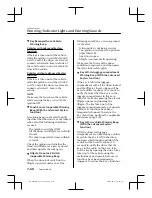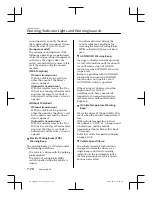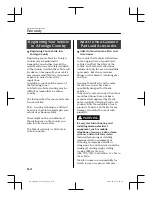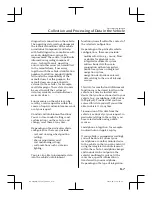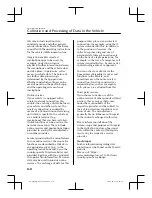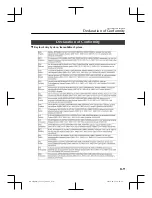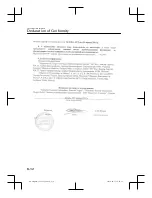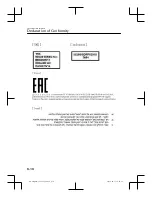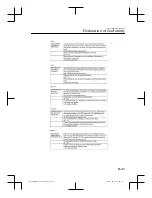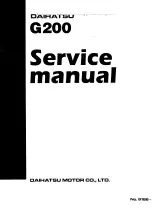
where contact details are also
provided.
Data, which is exclusively stored locally
on the vehicle, may be viewed with
expert assistance, e.g., in a vehicle
workshop, in return for payment if
appropriate.
Legal requirements regarding the
disclosure of data
To the extent that legal regulations
exist, manufacturers are obliged to
release information stored by them, at
the request of public authorities, to the
extent required on a case-by-case
basis (e.g., when a criminal offence is
being investigated).
Public authorities are also permitted to
read the data from vehicles in specific
cases, within the scope of applicable
law. For example, in the event of an
accident, information can be read from
the air bag control unit to help clarify
the circumstances of the accident.
Operational data on the vehicle
Control units process data in order to
operate the vehicle.
These include, for example:
vehicle status information (e.g.,
speed, deceleration, lateral
acceleration, wheel speed, seatbelt
usage indicator),
environmental conditions (e.g.,
temperature, rain sensor, distance
sensor).
These data are generally volatile and
are not stored beyond the operating
time, and only processed on the
vehicle itself. Control units frequently
contain data storage media. These can
be used to document, either
temporarily or permanently,
information about the condition of the
vehicle, component stress,
maintenance requirements and
technical events and failures.
The following information may be
stored, depending on the technical
configuration:
operating conditions of system
components (e.g., fill levels, tyre
pressures and battery status),
malfunctions and defects in
important system components (e.g.,
lighting and brakes),
response of the system to
extraordinary driving situations (e.g.,
deployment of an air bag, activation
of stability control systems),
information on events in which the
vehicle is damaged,
for electric vehicles, the state of
charge of the high-voltage battery
and the vehicle’s estimated range.
In particular cases (e.g., if the vehicle
has detected a malfunction), it may be
necessary to store data which would
normally be volatile.
If you make use of services (e.g., repair
and maintenance services), it may be
possible, if necessary, to read out and
use the stored operating data together
with the vehicle identification number.
The data from the vehicle may be read
out by employees of the Mazda
Network (e.g. authorised workshops,
manufacturer) or by third parties (e.g.,
breakdown services, independent
repair shops). The same applies in the
case of warranty cases and quality
assurance measures.
The data is usually read out via the
mandatory OBD (on-board
Customer Information
Collection and Processing of Data in the Vehicle
8-6
CX-30_8HQ1-EE-19I_Edition2_new
2019-10-17 16:47:52
Summary of Contents for CX-30 2020
Page 4: ...CX 30_8HQ1 EE 19I_Edition2_new 2019 10 17 16 47 52 ...
Page 80: ...MEMO 2 62 CX 30_8HQ1 EE 19I_Edition2_new 2019 10 17 16 47 52 ...
Page 148: ...MEMO 3 68 CX 30_8HQ1 EE 19I_Edition2_new 2019 10 17 16 47 52 ...
Page 408: ...MEMO 4 260 CX 30_8HQ1 EE 19I_Edition2_new 2019 10 17 16 47 52 ...
Page 588: ...MEMO 7 76 CX 30_8HQ1 EE 19I_Edition2_new 2019 10 17 16 47 52 ...
Page 669: ...10 Index 10 1 CX 30_8HQ1 EE 19I_Edition2_new 2019 10 17 16 47 52 ...
Page 680: ...10 12 CX 30_8HQ1 EE 19I_Edition2_new 2019 10 17 16 47 52 ...

